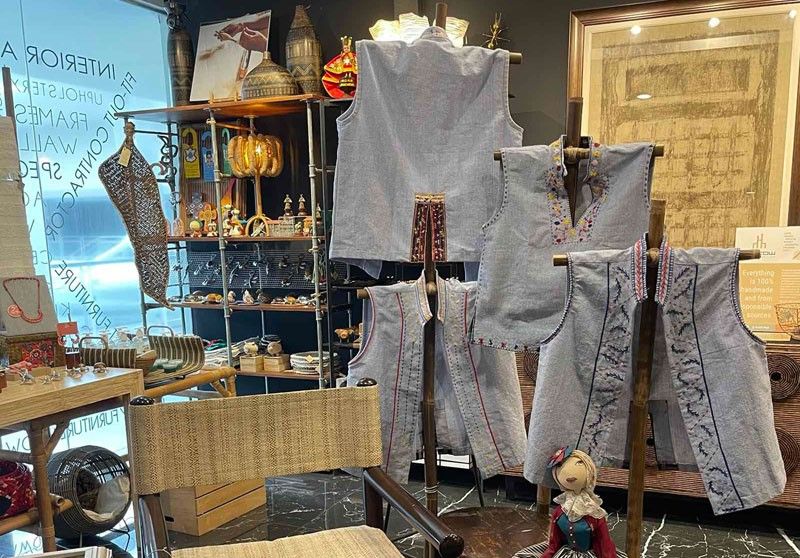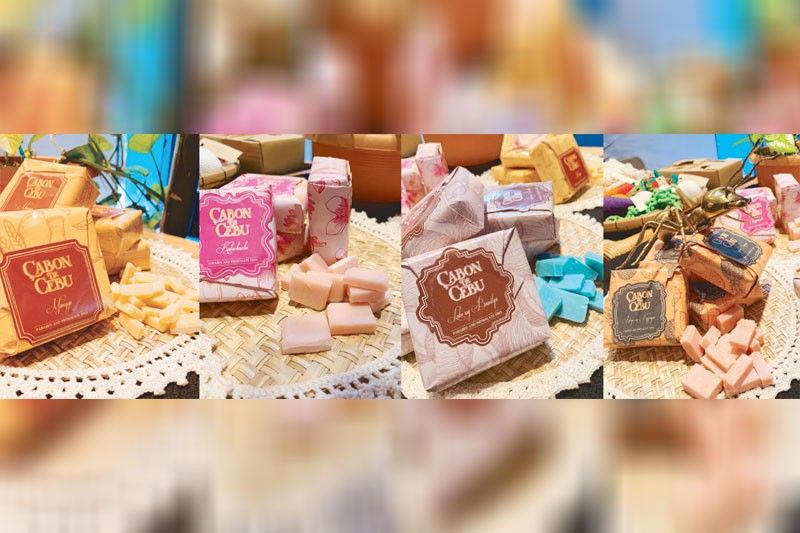‘Cebu,’ as defined by local artisans

MANILA, Philippines — “A City,” Deyan Sudjic writes, “is never complete, and cannot be a product of a single vision.” With the loosening of restrictions, the island’s people slowly emerged from isolation, and with the end of strict border delineation came the need to rediscover the nature of our own urban borders.
What is the city, perceived beyond the visual sense? Could the concept of “Cebu” exist despite seeing four walls and the same greenery, for weeks?
Throughout the lockdowns, HoliCOW continued its projects and collaborations with our designers and communities, and two collections recently debuted in the Cebu Design Week 2021 conveyed our artisans’ response to this theme.
The four scents of Mayk Lifestyle’s Çabon de Cebu soap line are curated to sketch a loose olfactory map of the concept of “Cebu.” Maybelline Té, HoliCOW PH collaborator and interior designer, layers memory to the mix: the Kalachuchi tree in her own yard (also ubiquitous in most gardens); the mixed-smells of fruit stalls along the highway or outside the church, where Pinya ug Kapayas (pineapple and papaya) stood out the most; Lubi (coconut) in freshly harvested heaps along summery beaches; and Mangga from the orchards in the upper highlands.
Artisanally made in small batches with saponified olive, palm and coconut oils, aloe vera and mica powder, Çabon de Cebu is paraben-free and perfect for any kind of skin type.
For Té, who had been subject to the erratic border shutdowns of the past year, scent plays a strong element of comfort and nostalgia. “At some point,” she says, “a homegrown Cebuano would find one of these four scents reminiscent of home, through our diverse but shared experiences travelling through the city.”
It also makes for a wonderful takeaway gift for the season.

HoliCOW’s slow-fashion and sustainable-couture Chambray collection is a texture trail that spans the long line of South-to-North travel. Primarily hand-loomed in our partner community in Argao, a municipality south of Cebu, its texture is imbued with both smooth cotton and the slightly rougher, indigenous Tingkal cotton. Tingkal grows only in three southern towns due to the topography signature of the island.
The cloth is then cut to shape and finally embroidered by the women’s sewing cooperative in Liloan city. With only loose parameters to guide them about the embroidery details, each vest carries with it the personal expressions of craft artisans from the texture of the fabric. These were designed with the “throw-on-and-thrive” concept of creating a more structured silhouette after layering over a more comfortable ensemble.
“If it’s for a bust-up Zoom (meeting), or dressing for our first post-quarantine meet-up, we wanted to show how wearing the Chambray also layers on you a small celebration of the skills of our artisans,” HoliCOW PH founding member and Chambray collection designer Debbie Palao says.
Çabon de Cebu by Mayk Lifestyle and the Chambray collection are available in-store (contact to set an appointment) and through inquiry.



















